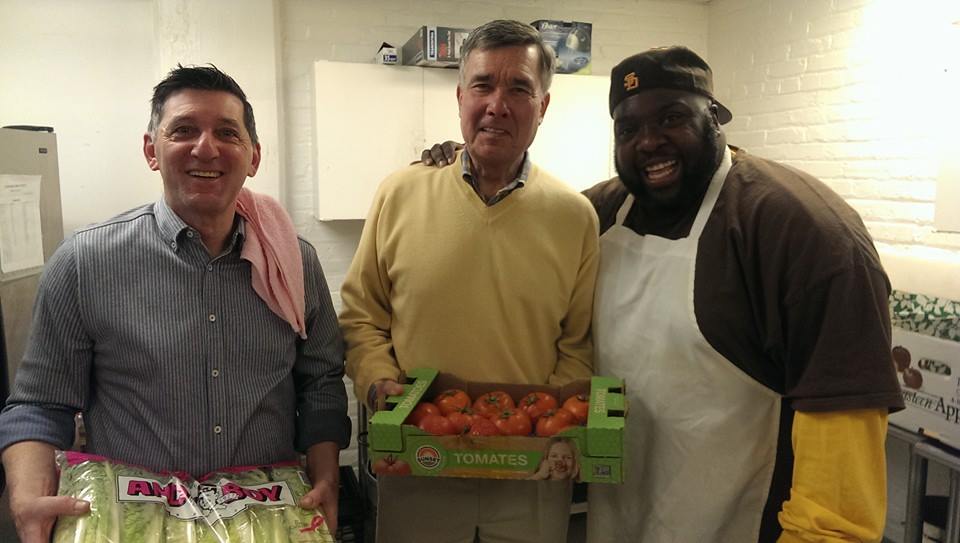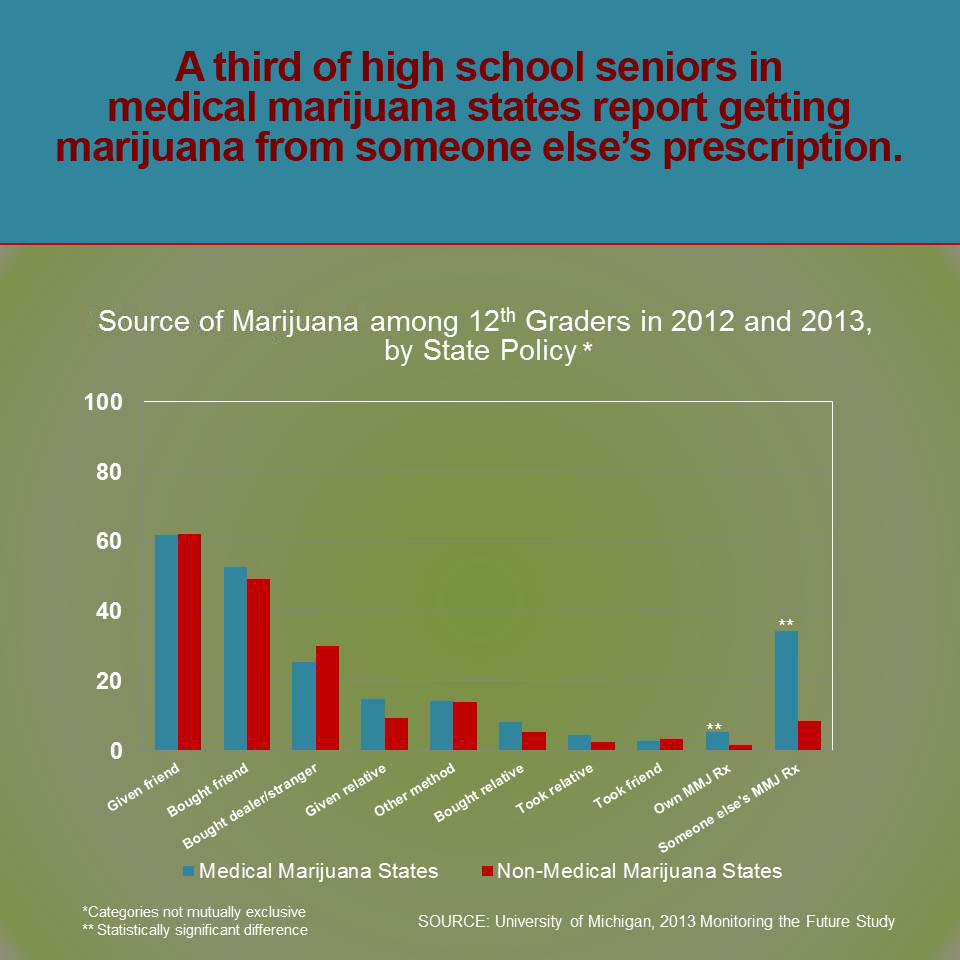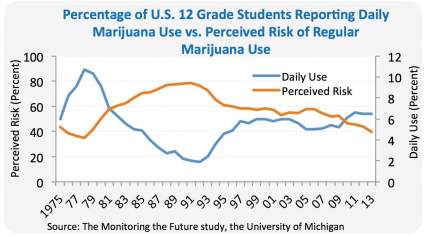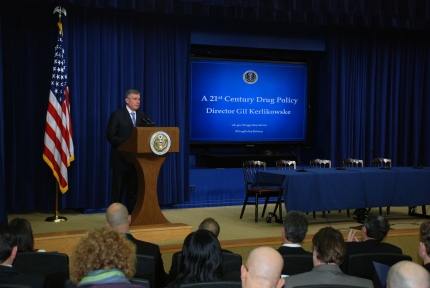ONDCP Blog
Law Enforcement Officer Prevented Overdose Death on Staten Island
Posted by on January 30, 2014 at 4:49 PM EDTYesterday, a life was saved in Staten Island. After arriving at the scene of an opioid overdose, a local law enforcement officer administered the overdose-reversal drug, naloxone, to an unresponsive victim. He was revived, thanks to the officer – and the naloxone he carried as part of the New York Police Department’s pilot program to train 180 officers to administer the overdose reversal drug.
Our Nation is struggling with an opioid epidemic: of the 38,000 drug overdose deaths in 2010, approximately 22,100 involved prescription drugs. More than 16,000 of these deaths involved opioid painkillers[i], more than cocaine and heroin combined. Data from the National Center for Health Statistics show that drug overdose deaths increased for the 11th consecutive year in 2010 – surpassing deaths caused by motor vehicle crashes[ii]. Staten Island has been particularly hard hit by this epidemic, where in 2011the mortality rate from overdose was four times as high as that of Manhattan, Queens and Brooklyn, and 3.5 times as high as the Bronx rate.

As staggering as these statistics are, we have reason to be optimistic about reversing them—because every opioid overdose death is preventable. We have steadfastly encouraged and promoted the distribution of naloxone to law enforcement professionals, EMTs and other emergency first-responders. In fact, the pilot program that saved a life yesterday was funded in part by our office through a grant from the New York-New Jersey High Intensity Drug Trafficking Area (HIDTA) program. The naloxone and atomizers were purchased with HIDTA funds while the other materials were provided by the New York State Department of Health.
ONDCP is proud to partner with state, city and local governments to continue to promote the use of naloxone, particularly within police departments. For more information, please contact us and sign up for updates.
[i] Sources: CDC/WONDER, extracted February 11, 2013
[ii] Source: NCHS Data Brief, December, 2011, Updated with 2009 and 2010 mortality data
Learn more aboutSupport for National Association of School Nurses' Position on the Legalization of Marijuana
Posted by on January 27, 2014 at 10:00 AM EDTThe Office of National Drug Control Policy (ONDCP) joins with school nurses across the country to express our support for efforts that promote wellness and good health outcomes for our Nation’s children, including the prevention of substance use disorders. ONDCP shares the concerns of school nurses regarding the harmful effects of marijuana use among young people. Given research indications that marijuana is harmful to the developing brain,[1] we are especially concerned about the repercussions of use on the health, safety, and education of adolescents. On January 27, 2014, based on overwhelming scientific evidence, the National Association of School Nurses (NASN) Board of Directors adopted an official position statement[2] outlining the negative impact of marijuana legalization on the health of students. ONDCP supports NASN in bringing attention to this issue.
School nurses are present in 75 percent of the Nation’s schools, so many are in touch with substance use trends within the school and greater community and are able to make educated assessments when students visit their offices. The school nursing profession has more than 100 years of experience, and school nurses know first-hand that healthy, drug-free children learn better. As more and more states consider the legalization of marijuana, school nurses are compelled to continue providing their students with the facts on the multiple physical and behavioral health consequences of marijuana use. Access to marijuana by young people and the impact of its use on the developing brain continue to be matters of concern for both ONDCP and NASN.
Together, we recognize that adult influencers, including parents, school nurses, teachers, counselors, and other support personnel in the academic setting, are key to helping adolescents understand the connection between good health practices and educational achievement. There is grave concern that marijuana use, given its impact on cognitive development, motor skills, and attention, will be detrimental to the learning environment for our young people. We encourage professionals in all health fields, parents, educators, and communities to get involved with this issue. We all must work together to reduce marijuana use and prevent substance use disorders among our young people.
David Mineta is Deputy Director for Demand Reduction at ONDCP. Carolyn Duff, MS, RN, NCSN, is President of the National Association for School Nurses.
[1] Meier MH, Caspi A, Ambler A, Harrington H, Houts R, Keefe RS, McDonald K, Ward A, Poulton R, Moffitt TE. Persistent cannabis users show neuropsychological decline from childhood to midlife. Proc Natl Acad Sci U S A. 2012, Aug 27.
2. It is the opinion of the NASN that marijuana is properly categorized by the DEA under Schedule 1 of the Controlled Substance Act. NASN recognizes the overwhelming evidence that “any change in the legal status of marijuana, even if limited to adults, could affect the prevalence of use among adolescents.”
Learn more aboutHonoring MLK Day at Clean & Sober Streets
Posted by on January 20, 2014 at 4:00 PM EDTDr. Martin Luther King, Jr. once said, “Life’s most persistent and urgent question is: What are you doing for others?”
Today, ONDCP staff answered President Obama’s call to honor the spirit of Dr. Martin Luther King, Jr. Day by making it a “day on” instead of a “day off.” We enjoyed a warm welcome from Clean and Sober Streets, long term residential drug and alcohol treatment and rehabilitation center in Washington, D.C.. We were honored to be welcomed into the home of many remarkable people in recovery and to learn about each of their experiences.

Dr. King committed his life to expanding opportunity for all Americans. He envisioned an America where service had the power to transform communities – a vision President Obama has fully embraced, and one that we are proud to embrace as well.

The residents of Clean and Sober Streets live and work together, support one another, and succeed in recovery together. Today, they demonstrated once again the power of recovery from substance use disorders – that treatment works, and that people can, and do, overcome substance use disorders.
 Learn more about
Learn more aboutWhat does the New Budget Deal Mean for Drug Policy Reform?
Posted by on January 17, 2014 at 2:53 PM EDTOver the past four years, we’ve worked hard to support drug policy reform rooted in science, evidence, and research. A difficult budget environment hasn’t made it easy. Damaging cuts caused by sequestration have placed real obstacles in the way of ensuring full support for services and programs that expand prevention, treatment, and smart-on-crime initiatives that represent a 21st century approach to drug policy.
But there is good news.
The bipartisan appropriations bill passed by Congress this week finally begins to repair some of these cuts. It also includes support for innovative alternatives that will protect public health and public safety while saving taxpayer dollars over the long run.
Some highlights from the bill:
- $1.8 billion in funding for the Substance Abuse Block Grant – a $110 million increase compared to FY2013. The grant gives states the ability to establish and expand substance use prevention and treatment services in order support people recovering from substance use disorders.
- $92 million will support the Drug Free Communities Support Program, which provides resources to local coalitions working to prevent substance use among young people.
- $45 million to support early health interventions through SAMHSA’s Screening, Brief Intervention, and Referral to Treatment (SBIRT) initiative. SBIRT helps doctors and medical professionals identify and address the signs and symptoms of problematic drug use before it becomes a more serious, chronic condition.
- Supporting the administration of an estimated $4.6 billion for drug treatment services and related costs through the Centers for Medicaid & Medicare Services.
- Restoration of a significant portion of funding for vital drug abuse research through the National Institutes of Health, including research emphasizing the health effects of heroin and prescription painkiller abuse.
- $68 million to fund programs designed to help formerly incarcerated offenders find employment, housing, and support through the Second Chance Act, and $27.5 million to advance criminal justice reforms at the state and local level via the Justice Reinvestment Initiative.
- Drug Courts, which work to divert non-violent offenders into alternatives to incarceration, including treatment in appropriate cases, were provided $40.5 million.
- For the first time ever, the bill also includes $4 million to support expansion of the innovative HOPE diversion model for drug offenders. The HOPE program uses swift, certain sanctions that have shown promise in reducing recidivism and drug use.
This bill is not perfect, and no one got everything they wanted (that’s the nature of compromise), but these are real investments in making our Nation healthier and stronger. Reducing drug use and its consequences is a vital issue that spans the political spectrum and this is a step in the right direction.
Learn more aboutA Message from Director Kerlikowske and Congressman Ben Ray Luján on National Impaired Driving Prevention Month
Posted by on December 27, 2013 at 1:32 PM EDTThis holiday season, as millions of Americans travel to see family and friends, it is important to take a moment and consider the role we all can have in keeping our roads safe. December is National Impaired Driving Prevention Month, a time to be especially mindful of preventing loved ones from getting behind the wheel when impaired by drugs or alcohol.
Beginning in 2010, President Obama declared December National Impaired Driving Prevention Month and called on all Americans to commit to driving sober, drug free, and without distractions. Whether linked to alcohol, drugs, or some other cause, impaired and distracted driving can have tragic results. According to the U.S. Department of Transportation, 10,322 deaths in 2012 were a result of alcohol-related highway accidents.[1] A nationally representative survey by the National Highway Traffic Safety Administration (NHTSA) found that 16 percent of weekend, nighttime drivers (roughly 1 in 6) tested positive for illicit drugs or medications in 2007.[2] Data compiled by NHTSA on fatal traffic crashes also show that 1 in 3 drivers with known drug-test results who were killed in a motor vehicle crash in 2010 tested positive for drugs (illegal substances as well as over-the-counter and prescription medications).
The Office of National Drug Control Policy (ONDCP) is working with a number of groups, including Mothers Against Drunk Driving, the National Organizations for Youth Safety, and RADD, the Entertainment Industry's Voice for Road Safety. We encourage parents to talk to their teens about the dangers of drunk and distracted driving, as well as drugged driving. It is important to point out that even drugs prescribed by a doctor can affect the mental and physical skills required for safe driving.
“Above the Influence,” ONDCP’s anti-drug campaign for teens, has released a Drugged Driving Toolkit to assist parents and community leaders in preventing drugged driving. You can download the Drugged Driving Toolkit here. And if you know someone with a substance use disorder who is in need of treatment, click on the Substance Abuse and Mental Health Services Administration’s Facility Locator.
National Impaired Driving Prevention Month is an opportunity to highlight the dangers posed by substance abuse on our Nation’s roadways every day. As spouses, parents, siblings, friends, and neighbors, we cannot afford to lose track of the effects that alcohol and drugs—even prescribed medications—can have on our faculties and the skills we need for safe driving. Let us make impaired driving awareness a priority this month and every month to help empower individuals, strengthen families, and save lives.
R. Gil Kerlikowske is the Director of National Drug Control Policy. Congressman Ben Ray Lujan represents New Mexico's 3rd congressional district.
[1] http://www.rita.dot.gov/bts/sites/rita.dot.gov.bts/files/publications/by_the_numbers/drunk_driving/index.html
[2] U.S. Department of Transportation, National Highway Traffic Safety Administration. 2007 National Roadside Survey of Alcohol and Drug Use by Drivers: Drug Results (2009). Available at http://www.nhtsa.gov/Driving+Safety/Research+&+Evaluation/2007+National+Roadside+Survey+of+Alcohol+and+Drug+Use+by+Drivers
Learn more aboutCross Post: Monitoring the Future Reveals Both Encouraging and Discouraging Trends
Posted by on December 19, 2013 at 10:42 AM EDTYesterday, the 2013 Monitoring the Future survey results were released, revealing that one-third of high school seniors in states with medical marijuana laws report getting marijuana from someone else's medical marijuana prescription.

A blog post from Dr. Nora Volkow, Director of the National Institute on Drug Abuse is below:
Every year, the NIDA-supported Monitoring the Future (MTF) survey conducted by researchers at the University of Michigan asks 8th, 10th, and 12th graders across the country about their current and past drug use and their attitudes toward drug use, providing us with an invaluable barometer of youth drug trends from year to year. The results of the 2013 MTF survey , which were released today, included some good news—such as 5-year declines in the abuse of prescription opioids, alcohol, and cigarettes by teens. Use of synthetic marijuana (K2/spice), Vicodin, and salvia by 12th graders is also down from last year, as is use of inhalants by 8th graders. It is gratifying to see these statistics, as well as the continued low levels of abuse of cocaine, heroin, and methamphetamine by students in the survey.But there were also reasons to be concerned. The survey showed a 4-year increase in the nonmedical use of Adderall by 12th-graders; students may abuse prescription stimulants in the mistaken belief that they will boost cognitive performance and help their grades, or simply to get high. And one of the most worrisome trends in the MTF concerns teens’ attitudes toward marijuana use. Less than 40 percent of high school seniors this year said they think regular marijuana users risk harming themselves (physically or in other ways), down almost five percentage points from last year; in fact, the perception by 12th-graders that regular marijuana may be dangerous is the lowest it has been since 1978.The plot below provides a striking teaching point: Over the 3 decades of MTF’s existence, the fluctuating perception of marijuana’s risks by teens has exactly mirrored how much they have used the drug. The public conversation about marijuana’s purported therapeutic benefits is likely contributing to the common impression that the drug is not harmful. Yet most of what we know from research in animals and humans points to significant cognitive impairment and negative impacts on brain development and various measures of life satisfaction, success, and achievement when marijuana is used heavily, especially during adolescence. There are at least two ways in which the problem of teen marijuana use could actually be worse than the MTF numbers indicate. First, the survey does not take into account the rising potency of marijuana from year to year. In 1990, marijuana in the United States averaged 3.35 percent THC (the main psychoactive ingredient in the marijuana plant); today’s average street potency is well over four times that, at almost 15 percent. Although it is possible that users today may moderate their THC intake by smoking less on a given occasion, it is likely the MTF use trends don’t fully reflect the magnitude of the impact marijuana may be having on the brains of today’s teenagers. For example, the participants in the large-scale New Zealand study published last year who had lost an average of 8 IQ points after using marijuana heavily as teenagers would have turned 18 in 1990 or 1991—when marijuana potency in New Zealand was comparable to what it was in the U.S. at the time (between 1 and 5 percent). Would they have lost more IQ points had marijuana been more potent? Only further research can answer that question.Second, it is important to remember that the MTF only surveys adolescents who are in school. Although the nationwide graduation rate is climbing, fully a quarter of the class of 2010 did not finish high school, and heavy marijuana use is linked to school dropout. The 6.5 percent of 12th graders who reported in the MTF that they use marijuana daily is thus likely to be less than the percentage of all American 17- and 18-year-olds using marijuana on a daily or near-daily basis.The annual MTF results give us crucial information about where to concentrate our efforts at prevention. While America’s teens do seem to be hearing some of our messages—for instance, that synthetic marijuana could easily land them in an emergency room—we clearly need to do more to impress upon them that the harms of marijuana, although less immediate and less obvious than those of some other drugs, are no less serious: Among others, it can negatively affect a person’s ability to learn and, in turn, their academic performance. This is an important reason for teens to steer clear of marijuana while their brains are still maturing.Learn more about
There are at least two ways in which the problem of teen marijuana use could actually be worse than the MTF numbers indicate. First, the survey does not take into account the rising potency of marijuana from year to year. In 1990, marijuana in the United States averaged 3.35 percent THC (the main psychoactive ingredient in the marijuana plant); today’s average street potency is well over four times that, at almost 15 percent. Although it is possible that users today may moderate their THC intake by smoking less on a given occasion, it is likely the MTF use trends don’t fully reflect the magnitude of the impact marijuana may be having on the brains of today’s teenagers. For example, the participants in the large-scale New Zealand study published last year who had lost an average of 8 IQ points after using marijuana heavily as teenagers would have turned 18 in 1990 or 1991—when marijuana potency in New Zealand was comparable to what it was in the U.S. at the time (between 1 and 5 percent). Would they have lost more IQ points had marijuana been more potent? Only further research can answer that question.Second, it is important to remember that the MTF only surveys adolescents who are in school. Although the nationwide graduation rate is climbing, fully a quarter of the class of 2010 did not finish high school, and heavy marijuana use is linked to school dropout. The 6.5 percent of 12th graders who reported in the MTF that they use marijuana daily is thus likely to be less than the percentage of all American 17- and 18-year-olds using marijuana on a daily or near-daily basis.The annual MTF results give us crucial information about where to concentrate our efforts at prevention. While America’s teens do seem to be hearing some of our messages—for instance, that synthetic marijuana could easily land them in an emergency room—we clearly need to do more to impress upon them that the harms of marijuana, although less immediate and less obvious than those of some other drugs, are no less serious: Among others, it can negatively affect a person’s ability to learn and, in turn, their academic performance. This is an important reason for teens to steer clear of marijuana while their brains are still maturing.Learn more aboutSpotlight: Drug-Free Communities Support Program & Community Coalitions
Posted by on December 16, 2013 at 10:54 AM EDTLast week, one of our office’s most important and evidence-based programs convened leaders in substance use prevention from across the Nation. The Drug-Free Communities Support program (DFC) hosted its annual New Grantee meeting in Washington, D.C., giving us an opportunity to discuss a fundamental part of our work at ONDCP: prevention.
This year, we awarded $79.2 million in DFC grants to more than 600 coalitions across the country. These grants provide community coalitions with support to prevent and reduce youth substance use. We are proud to work with our partner in substance use prevention, Community Anti-Drug Coalitions of America (CADCA), to give these coalitions the training and infrastructure they need to successfully reduce youth substance use.
Substance use is a huge public health problem in our country, costing us in 2007 more than $193 billion in costs related to criminal justice, health, and lost productivity.
Preventing drug use before it begins is a cost-effective, common-sense approach to promoting safe and healthy communities. Research shows an association between drug use and traffic crash deaths, lost productivity and poor academic performance. Illicit drug use also contributes to HIV-transmission rates and puts children at risk for abuse and neglect. Preventing substance use and dependence before they begin can save lives and cut costs related to healthcare and criminal justice. DFCs help establish networks of trained, dedicated local leaders who make a difference by building healthy communities and reducing youth substance use.
What is the Drug-Free Communities Support Program (DFC)?
A Federal grant program that provides funding to community-based coalitions that organize to prevent youth substance use. Since the passage of the DFC Act in 1997, the DFC program has funded nearly 2,000 coalitions and currently mobilizes nearly 9,000 community volunteers across the country. The philosophy behind the DFC program is that local drug problems require local solutions. With a small Federal investment, the DFC program doubles the amount of funding through the DFC program’s match requirement, to address youth substance use. Recent evaluation data indicate that where DFC dollars are invested, youth substance use is lower. Over the life of the DFC program, youth living in DFC communities have experienced reductions in alcohol, tobacco, and marijuana use.
In the past eight years that DFC has been evaluated, DFC-funded communities have achieved significant reductions in youth alcohol, tobacco, and marijuana use. For middle school youth living in DFC-funded communities, data from the DFC National Evaluation indicate a 16% reduction in alcohol use, 27% reduction in tobacco use, and 23% reduction in marijuana use. High school-aged youth have reduced their use of alcohol by 9%, tobacco by 16%, and marijuana by 7% in DFC-funded communities. DFC-funded coalitions are actively engaged in facilitating prescription drug take-back programs in conjunction with local law enforcement, as well as local policy change to effectively address the accessibility and availability of alcohol, tobacco, and other drugs. See the 2012 National Evaluation Report.
In an increasingly challenging media environment, now, more than ever, the DFC program is needed in communities across the country to help prevent drug use and reduce its consequences. Drug problems manifest in local communities and show up in our schools, churches, health centers, and in our homes. The DFC program helps local leaders organize to identify the youth drug issues unique to their communities and develop the infrastructures necessary to effectively prevent and respond to the disease of addiction.
What does the Drug-Free Communities Support program do?
The primary purpose of the DFC program is to: strengthen collaboration among community entities; and reduce substance use among youth. DFC grantees are required to work toward these two goals as the primary focus of their Federally-funded effort. Grants awarded through the DFC program are intended to support established community-based coalitions capable of effecting community-level change. For the purposes of the DFC program, a coalition is defined as a community-based formal arrangement for cooperation and collaboration among groups or sectors of a community in which each group retains its identity, but all agree to work together toward a common goal of building a safe, healthy, and drug-free community. Coalitions receiving DFC funds are expected to work with leaders within their communities to identify and address local youth substance use problems and create sustainable community-level change through environmental strategies.
What does the Drug-Free Communities Support program fund?
The DFC program funds one thing: community coalitions that have formed to address youth substance use. Communities often understand that local stakeholders and citizens hold the key to solving local problems. In realizing this, community-based coalitions are created every day in this country. A typical DFC budget submission includes the salary and benefits of an individual that ensures effective day-to-day operations of the coalition, training and technical assistance for the coalition, travel, and prevention efforts that place emphasis on environmental strategies . DFC funding can be considered the financial support required to further leverage funding to support the various strategies a community needs in order to solves its youth substance use problems.
Learn more aboutONDCP Hosts First-Ever Drug Policy Reform Conference
Posted by on December 11, 2013 at 11:57 AM EDTOn Monday, Director Kerlikowske and Deputy Director Botticelli kicked off an unprecedented discussion at the White House on the future of drug policy. Braving a snowy D.C. morning, approximately 140 people attended to engage in a conversation on drug policy reform and hundreds more watched online. Limited video on demand is available here.
Among those speaking at the conference were the Deputy Attorney General (James Cole) and Tonya Robinson, Special Assistant to the President and member of the Domestic Policy Council. They were joined by former Congressman Patrick Kennedy, who is himself in recovery from a substance use disorder and who moderated the panel on stigma and addiction.
The Drug Policy Reform Conference featured three panels and focused on public health approaches to drug policy, criminal justice reform, and the importance of lifting the stigma of addiction.
Attendees and the online audience heard from addiction recovery specialist Jacki Hillios about her work combining substance use disorder treatment with active, healthy lifestyles at Phoenix Multisport. Founded in 2009, Phoenix Multisport is a hub for sports and addiction recovery in Denver, Colorado. Its founder, Scott Strode, was recognized as a CNN Hero in 2012 for his innovative approach to substance use disorder treatment.
Conference attendees also heard from Alby Zweig, who, with the help of the Denver Drug Court, went from being a defendant to serving as the court’s magistrate. Just before the third and final panel began, Pat Taylor (of Faces and Voices of Recovery) showed a video trailer for film director Greg Williams’ feature “The Anonymous People”.
You can review live-tweets of the conference on Twitter on the @ONDCP profile page.
Learn more aboutDirector Kerlikowske Participates in Small Business Saturday
Posted by on November 30, 2013 at 2:00 PM EDTToday, Director Kerlikowske joined local officials in supporting small businesses as part of Small Business Saturday. An initiative of the U.S. Small Business Administration, Small Business Saturday is a day dedicated to supporting small businesses on one of the busiest shopping weekends of the year.
America’s small businesses are engines of job creation across our country, and President Obama is committed to creating an environment where small businesses can thrive. By cutting taxes for small businesses and increasing their access to capital, the President has encouraged small businesses to expand and create the jobs we need now—and for decades to come.
Director Kerlikowske visited “Holy Cow,” a restaurant in Alexandria, Virginia, for a hamburger lunch. Holy Cow gives back to its community by donating a quarter from every burger sold to local non-profits, including several organizations offering treatment services for substance use and mental health disorders and support to women who are transitioning from incarceration back into the community. In its first year of business, Holy Cow donated more than 72,000 quarters to over 120 different local Alexandria-based charitable organizations.
To learn more about Small Business Saturday, visit sba.gov/saturday.
Learn more aboutAddressing a Public Health Crisis in Ohio
Posted by on November 20, 2013 at 2:28 PM EDTDue to a dramatic increase in the number of heroin overdose deaths in Northeast Ohio, the Cleveland Clinic, the U.S. Attorneys Office for the Northern District of Ohio, and a host of other education, prevention, and law enforcement entities are hosting a heroin summit on November 21, 2013 at the Cleveland Clinic.
Heroin abuse is a public health crisis in Northeast Ohio. In 2007, 40 people died from a heroin overdose in Cuyahoga County (Ohio's largest county). This year, that figure is expected to exceed 200. For comparison, in Greater Cleveland, twice as many people will die from a heroin overdose than be the victims of a homicide.
“Greater Cleveland’s leading institutions are coming together to find solutions to this public health crisis,” said Steven Dettelbach, the U.S. Attorney for the Northern District. “The fight against heroin is not just about arrests. It is also about prevention and treatment.”
The daylong event will feature speakers at the forefront of dealing with the heroin epidemic, as well as panel discussions and breakout sessions.
"We have to speak out loudly and frequently about this emerging public health crisis," Cuyahoga County Executive Ed FitzGerald said. "We are in the middle of something that is very alarming."
By outlining the scope of the problem and discussing the relevant issues, the heroin summit hopes to create a community action plan that will begin to turn the tide in the region's battle with heroin abuse.
Learn more about
- &lsaquo previous
- …
- 3
- 4
- 5
- 6
- 7
- 8
- 9
- 10
- 11
- …
- next &rsaquo


